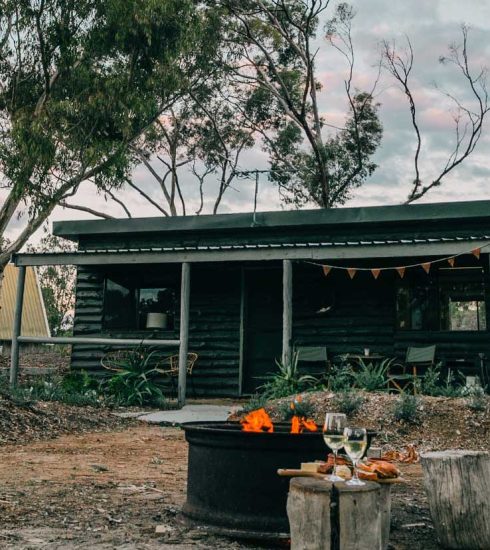Green Building Technology in Hot Climate
Constructing a Sustainable Future
As the world grapples with the effects of climate change, the need for sustainable and eco-friendly solutions has become paramount. Green Building Technology in hot climates presents a unique set of challenges and opportunities. This article delves into the innovative strategies and techniques that architects, builders, and environmental enthusiasts are employing to create structures that are energy-efficient, environmentally friendly, and comfortable in warm climates.
Green Building Technology in Hot Climate
In the heart of regions with scorching temperatures, Green Building Technology stands as a beacon of hope. It encompasses a spectrum of strategies and practices that aim to reduce the environmental impact of construction while optimizing energy efficiency and indoor comfort. Building in hot climates requires a thoughtful blend of architecture, engineering, and sustainable technologies to ensure a harmonious coexistence between humans and the environment.
Sustainable Design and Architecture
Incorporating Passive Cooling Techniques
Utilizing natural elements for cooling purposes is a hallmark of Green Building Technology in hot climates. By integrating features such as shading devices, thermal mass, and natural ventilation, architects create buildings that remain naturally cool. Passive cooling techniques tap into the principles of physics and airflow, allowing structures to minimize the need for energy-intensive air conditioning systems.
Smart Building Orientation
The orientation of a building can significantly impact its energy consumption. In hot climates, proper alignment can maximize shade during the hottest hours and optimize exposure to cooling breezes. Employing technology like Building Information Modeling (BIM) aids architects in designing structures that are optimally positioned to harness natural elements for temperature regulation.
Energy-Efficient Technologies
Solar Power Utilization
Harnessing the power of the sun is a key aspect of Green Building Technology in hot climates. Solar panels, solar water heaters, and solar-powered air conditioning systems offer sustainable alternatives to conventional energy sources. These technologies not only reduce a building’s carbon footprint but also contribute to long-term cost savings.
Reflective Roofing and Cool Roofs
Dark roofs can absorb a significant amount of heat, causing indoor temperatures to rise. Reflective roofing materials, also known as cool roofs, have high solar reflectance and thermal emittance properties. These roofs reflect sunlight and emit absorbed heat, thus keeping the building cooler and reducing the demand for artificial cooling.
Water-Efficient Practices
Xeriscaping and Native Landscaping
Green Building Technology extends beyond the building itself to the surrounding landscape. Xeriscaping, a landscaping method that utilizes drought-resistant plants and minimal water, helps conserve water resources in hot climates. Incorporating native plants not only requires less irrigation but also supports local ecosystems.
Rainwater Harvesting Systems
Water scarcity is a significant concern in many hot climate regions. Rainwater harvesting systems collect and store rainwater for various non-potable uses, such as irrigation and flushing toilets. By reducing reliance on traditional water sources, these systems contribute to sustainability and water conservation efforts.
Cooling Solutions
Evaporative Cooling Systems
Evaporative cooling harnesses the principle of water evaporation to lower air temperatures. This technology is particularly effective in dry and hot climates. It involves passing warm air through water-saturated pads, causing the water to evaporate and cool the air before it enters the building.
High-Efficiency Air Conditioning
When air conditioning is necessary, opting for high-efficiency systems is essential. Variable refrigerant flow (VRF) systems, for instance, offer zoned cooling, enabling precise temperature control in different areas. Regular maintenance of these systems ensures optimal performance and energy savings.
FAQs
How does passive cooling work in hot climates?
Passive cooling relies on design elements that naturally regulate indoor temperatures. Shading, insulation, and ventilation techniques minimize the need for mechanical cooling systems.
Are solar-powered systems effective in extremely hot climates?
Yes, solar-powered systems can be highly effective in hot climates. With ample sunlight, these systems generate sufficient energy to power various aspects of a building.
What is the primary benefit of reflective roofing?
Reflective roofing, or cool roofing, reduces heat absorption, which in turn decreases indoor temperatures and lessens the need for air conditioning.
How does xeriscaping contribute to sustainability?
Xeriscaping reduces water consumption by using drought-resistant plants. This minimizes the need for excessive irrigation, promoting water conservation.
Can rainwater harvesting be used for drinking water?
Rainwater harvested from rooftops is generally used for non-potable purposes like irrigation and flushing toilets. Additional treatment would be required for potable use.
Is evaporative cooling energy-efficient?
Evaporative cooling is energy-efficient as it relies on water evaporation, which consumes significantly less energy compared to traditional air conditioning systems.
Conclusion
Green Building Technology in hot climates holds immense promise for a sustainable future. By amalgamating innovative design, energy-efficient technologies, and eco-conscious practices, it offers a roadmap for constructing structures that are both environmentally friendly and comfortable. As the world embraces the urgency of climate action, these strategies pave the way for a greener, cooler, and more sustainable tomorrow.






